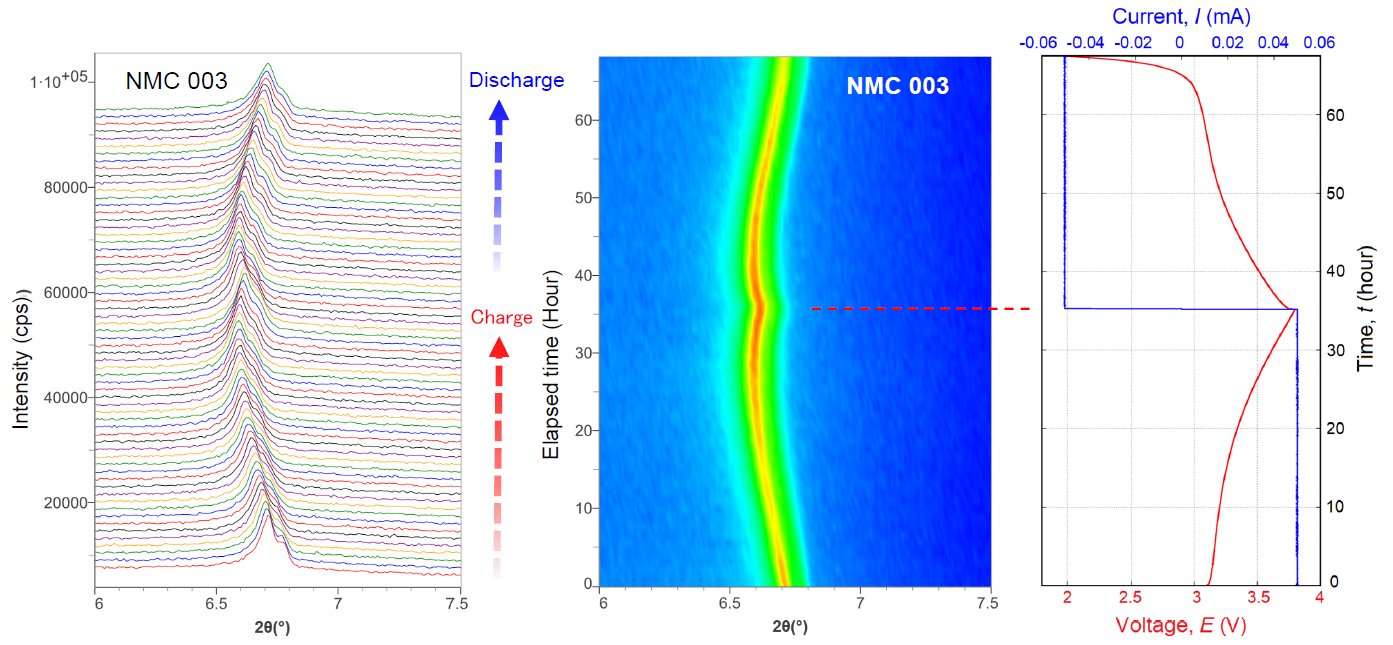Application Note B-XRD1124
Introduction
All-solid-state batteries that use solid electrolytes are superior to existing lithium ion batteries that use liquid electrolytes in terms of safety, higher capacity, and reduced size. Battery performance is closely related to changes in the crystal phase of the positive electrode material during charge and discharge cycles; therefore, operando measurements using short-wavelength X-rays with high penetration power are being actively conducted. In addition to Mo radiation, Ag radiation can be used as a short wavelength X-ray source. By combining Ag radiation and convergent beam optics, operando measurements can be performed by transmission geometry even for all-solid-state batteries where sample absorption is significant.
Measurements and results
Figure 1 shows the structure of a laminated cell type all-solid-state lithium-ion battery, and Figure 2 shows the X-ray diffraction profile measured with an X-ray diffractometer equipped with an Ag source and a focusing mirror. Diffraction peaks from the positive electrode material (NMC (Li(Ni, Mn, Co)O₂)), which is thinner than the other components, were clearly detected. Figure 3 shows (a) combined diffraction peak profiles of the positive electrode material during charge/discharge, (b) a profile map, and (c) a voltage/current graph at a charge/discharge rate of 0.05 C = 0.05 mA/g. It was confirmed that the NMC 003 diffraction peak angle changed during the charge and discharge cycles.

Figure 1: Structure of all-solid-state battery

Figure 2: XRD profile of all-solid-state battery

Figure 3: Operando measurement result of all-solid-state battery (a) Multiple writing of NMC 003 peak (b) Profile map of NMC 003 peak (c) Voltage/current graph
Samples provided by: Osaka Prefecture University, Graduate School of Engineering, Tatsumisago and Hayashi Laboratory

